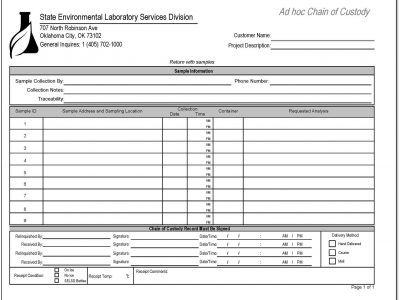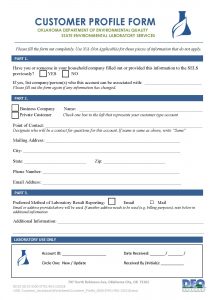Sample Collection Assistance
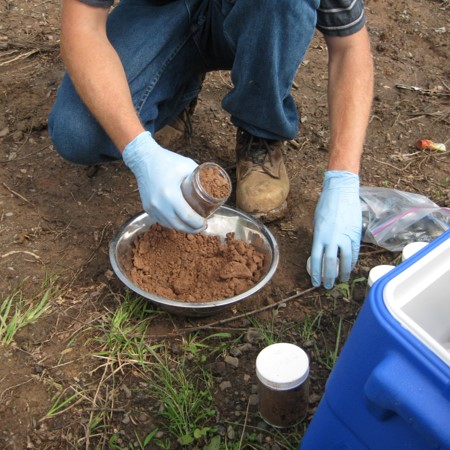
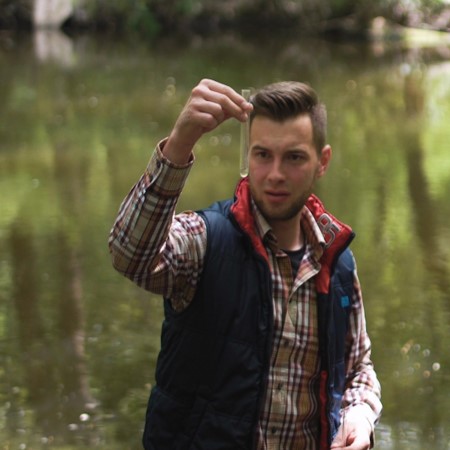
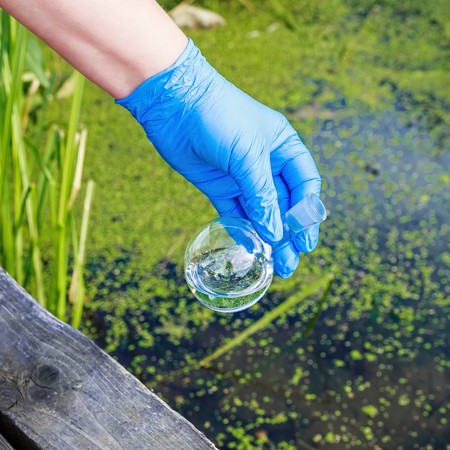
SAMPLE COLLECTION FORMS
There are several options available to customers who need paperwork and sampling supplies for laboratory analysis with the State Environmental Laboratory. You may call or email the laboratory so that we may assist in providing paperwork and sampling containers. It is always best to call the laboratory so that we can collect your customer information, log samples and appropriate or requested tests, provide necessary paperwork and correct sampling materials. Or, you may print the forms below if you do not have time to contact the laboratory before sampling. The chain of custody is a required sample collection form used to document the customer, sample information like collection location, date and time, and tests requested in addition to custody of the samples. The customer profile form is used to create new accounts or update accounts on file for customers and to let us know reporting and payment contacts.
-NOTICE-
Our Chain of Custody forms have been updated. Please watch the tutorial videos at the bottom of this page for more information.
Sample Collection Instructions
Below are instruction documents for various tests analyzed by the State Environmental Laboratory. Collection instructions and requirements vary test by test. If you require additional assistance or can’t find instructions below for your test, please call 405-702-1000.
Public Water Supply- Compliance Sampling Instructions
- HAA Sampling
- Inorganic Chemicals (IOC)
- Lead & Copper
- Nitrate Sampling
- Nitrate & Nitrite Sampling
- Nitrite Sampling
- Radiochemistry
- Specific Ultraviolet Absorbance
- Synthetic Organic Chemicals (SOCs)
- Total Coliforms & E.coli Sampling (RTCR)
- Total Organic Compounds (TOC)
- Trihalomethanes (THM)
- Volatile Organic Compounds (VOCs)
Non-compliance Sampling Instructions
- BTEX & Gasoline Range Organic Compounds: Liquid
- BTEX & Gasoline Range Organic Compounds: Solid
- Radon
- Total Petroleum Hydrocarbons (TPH): Solid
- Total Petroleum Hydrocarbons (TPH): Liquid
- Semi-Volatile Organic Compounds (SVOCs): Liquid
- Semi-Volatile Organic Compounds (SVOCs): Solid
- Volatile Organic Compounds (VOCs): Liquid
- Volatile Organic Compounds (VOCs): Solid
- Total Coliforms & E.coli Sampling (Private)
- Nitrate & Nitrite Sampling (Private)
Tutorial Videos
Chain of Custody Training for Public Water Supply Video- *New
Chain of Custody Training- Prelogged NonCompliance Video- *New
Chain of Custody Training Adhoc Samples Video- *New
Sample Collection Guide: Total Coliforms and E. coli Bacteria for Public Water Systems – YouTube
Sample Collection Guide: Disinfection Byproduct Rule (TTHM & HAA5) for Public Water Systems (youtube.com)
Sample Collection Guide: Total Coliform & E. Coli Bacteria for Private Customers (youtube.com)
Sample Collection Guide: Nitrate/Nitrite for Public Water Systems (youtube.com)
Sample Collection Guide: Nitrate/Nitrite for Private Customers (youtube.com)


